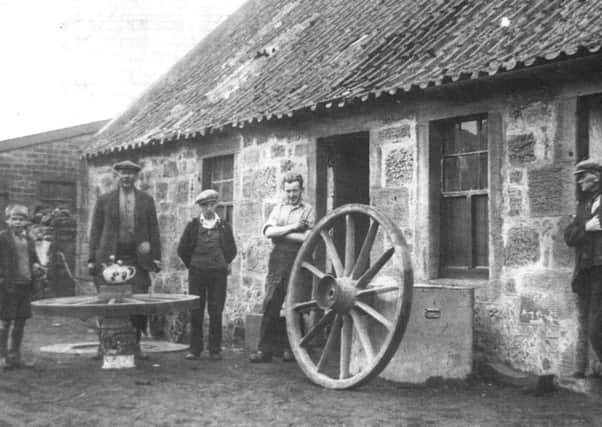Maddiston's wealth was built on coal and iron ore


That’s why, when someone greets me with the words “Ian, I have a question for you”, I whisper a quick prayer “Please not Maddiston!”.
This explains why I have managed to avoid writing about the village for the six year life of this column.
Advertisement
Hide AdAdvertisement
Hide AdNot that the folk up there will be overly concerned because thanks to the sterling efforts of my friend David Leask there is a thriving history group in the village and a vast collection of articles and images which tell the story of Maddiston and much else.
And it is indeed a great story linked to that of the parish of Muiravonside of which Maddiston is the ‘‘capital’’ and main settlement.
The parish was officially divided from Falkirk in the 1640s and includes the ruins of the Livingston castle of Almond (or Haining) and the pre-Reformation priory of Manuel.
Long before this there was a community in Maddiston with the earliest surviving mention dating back to 1424.
Advertisement
Hide AdAdvertisement
Hide AdA century later part of ‘‘Mawdestoun’’ was in the hands of a man called John Knollis described as a burgess of Linlithgow.
Coal mining was an early occupation and ‘‘hewers’’, ‘‘coalheughs’’ and ‘‘sinkis’’ appear in several charters from the beginning of the 16th century.
A report of 1723 says that ‘‘The village of Maduston stands half a mile southwest from the Kirk - here are good coal pits’’.
As ever it was the arrival of Carron Company in 1759 with its huge demand for coal that triggered the growth of all the Braes villages including Maddiston which also produced iron ore.
Advertisement
Hide AdAdvertisement
Hide AdLike its neighbour to the north, Brightons, there was also a stone quarry supplying the local area as well as the growing city of Edinburgh.
For centuries the local population attended the parish church of Muiravonside which was replaced in 1804 by the present building.
It was not for another 100 years that they had a place of worship in the village itself.
The handsome Cairneymount Church at the top of the hill was designed by Falkirk architect James Strang at a cost of £1800 paid for by John Urquhart of Vellore.
Advertisement
Hide AdAdvertisement
Hide AdIt served until 2005 and was converted into a private house.
At the north end of Maddiston, Rumford grew up as a mining community with a large Irish population.
It had a separate Catholic Church as early as 1891 and still has despite closures and mergers elsewhere.
The originally building survives as a joiner’s workshop. The name Rumford is probably a shortened version of Gardrum Burn Ford given that the burn and the road meet in the vicinity.
Advertisement
Hide AdAdvertisement
Hide AdCoal mining continued to dominate Maddiston well into the modern era.
When the inevitable decline came after World War II the expansion of the pre-war Smith family transport business helped to offset the loss of jobs as the mines closed and the farms reduced their labour forces.
By the early 1960s the firm had 370 lorries on the road carrying goods, and the name of the village, to all corners of Britain.
In 1968 Smith’s became part of the United Transport group and the local base slowly declined until today there is no trace of the once mighty undertaking beyond very collectable models of Smith’s lorries at antique fairs!
Today house building is the main development activity as the Braes area, born of the Forth Valley’s need for coal, becomes instead a residence for its working population.